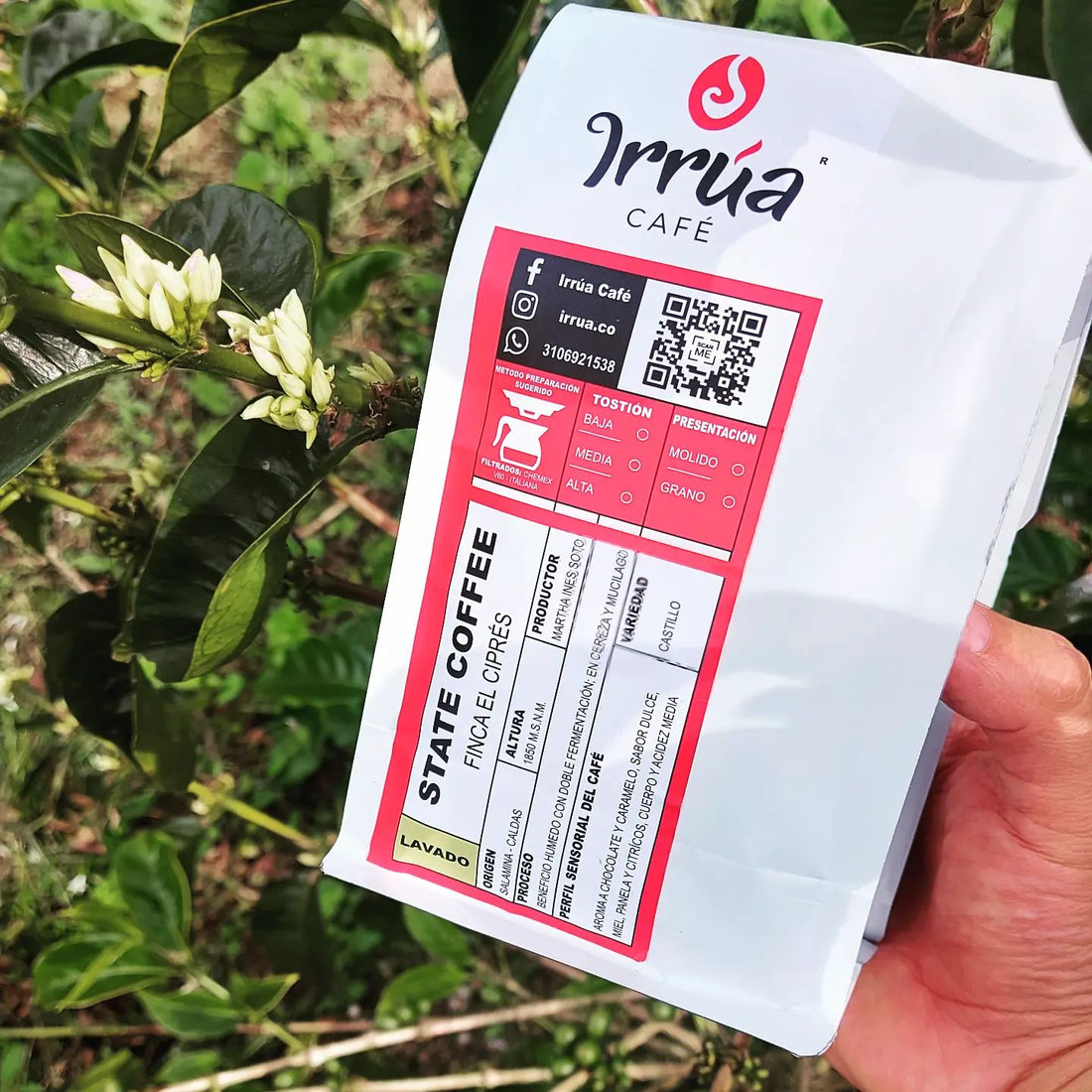Irrúa, the excellent coffee from the north of Caldas that you should try
 Photo: Courtesy Irrúa Café
Photo: Courtesy Irrúa CaféOver the Central mountain range of Colombia you can see a quilt of green and blue patchwork, which from above forms an unparalleled vegetal landscape. A combination of meandering rivers, flowers, lakes, guaduales, waterfalls, trees and countless vast coffee plantations. This visual feast is the home of Irrúa coffee, which grows and is enriched in the ancient land of the Embera Chamí and their family the Carrapas, who settled on the banks of the Chamberí River.
“That's why we call our coffee Irrúa, in homage to the history of Caldas and this river that flows through our El Ciprés farm, in Salamina (north of Caldas) where the ancient communities of pre-Columbian times baptized this area as the rumor of Chamberí. , by the sound of the river colliding with the stones,” says Luis Felipe Escobar, founder of the Irrúa café.
This natural hideaway was the center of dreams to which Luis Felipe Escobar went every time he wanted peace. Precisely, this was the place where previous generations began to grow coffee to sell it in parchment or green.
A coffee dream
However, the humid aroma of the earth between the coffee plantations and the silence broken by the birds led this dreamer to give something never thought of to his grandparents, great-grandparents and great-great-grandparents: a supremely excellent coffee.
“Five years ago no one gave a peso for the coffee from the farm that we have today. They told me that the coffee plantations were no good, that it was the fault of the land or the area. But I refused to believe it and I started working on sample analysis, profiling the coffee with tasters and in just five months we managed to enter the Nespresso . That was an impressive encouragement to say: 'Hey, we have something great on our hands,' says Escobar, who worked as an economist for eight years and left everything to pursue the dream of being a coffee farmer.
Against the tide

Coffee farmer and Luis Felipe Escobar in the coffee plantations of the El Ciprés farm.
Who in their right mind leaves a stable job to take charge of a coffee farm? It was, perhaps, one of the questions that Luis Felipe Escobar asked himself when he was in charge of 130,000 coffee trees grown on 22 hectares and realized that the crop was not profitable as it had been done for more than 60 years.
“The first coffee we took out didn't give us anything. It was a poorly processed thing where we put all the grains together without choosing them by size or density. There my parents said don't waste any more time and dedicate yourself to what you know how to do. But with perseverance, discipline and betting on a dream, we began to convince ourselves that coffee has a future and that it will always have its risks, for better or worse,” says Escobar.

Martha Ines Soto and Carlos Ricardo Escobar Ortega parents of Luis Felipe and lifelong coffee growers.
This is how little by little the entire Irrúa team modernized the bean selection processes, with their proper roasting curves, to achieve a coffee above 80 points and with chocolate, caramel, orange citrus notes and a aftertaste that lingers on the palate.
Irrúa's leap of faith

Harvesting the Castillo and Colombia variety harvest.
After trial and error, Escobar arrived at a birthday party with a bag of roasted coffee that had no label, much less an Invima registration. The evening was falling and the moonlight illuminated the houses of Salamis. A smell of freshly ground coffee perfumed the air and spread throughout the house. The guests looked at the kitchen, from which Escobar emerged with a cup for each one.
“Everyone started saying: 'Hey, what a good export coffee' and I told them: 'Isn't that right? Well, I'll tell you it's the one on our farm.' Nobody in the room could believe it. Paradoxically, no one in the family had tried the coffee we produced until that moment,” Escobar says.
Since then, Escobar's family supported him to continue with the project, and today after five years of research and laboratory tests, Irrúa is one of the best coffees in Colombia.
Yes, it is possible to eradicate poverty through coffee

Collector of the Irrúa coffee team.
If there is something in the world that has not allowed Escobar to give up on the process of producing coffee, it is the 40 coffee-growing families that depend on the sale of Irrúa Café.
“We were in a market where we earned almost nothing from coffee, despite the effort of tilling the land. That is why we decided to restructure our efforts and design a business model with a sustainable price that lasts over time because all of this is about dignifying the work in the fields and ensuring that farmers can aspire to much more than tomorrow's food. ”explains Escobar.
To this vision is added a new way of relating in the field. Before there was the figure of the landowner who could not be spoken to, now there is that of a committed team, who knows the needs of their environment.
“In the countryside you find very strong stories, of farmers who can't even get to work because they couldn't eat the night before. These are tough situations that we want to reverse with Irrúa coffee,” says Escobar.
The support of the Federation and environmental care

Cared for and preserved walnut forests.
In addition to studying barista at SENA and obtaining the support of his coffee-tasting wife, Luis Felipe had the support of the Federation, which with its extension workers advised him how to make his coffee plantations a profitable and generous source of income over time.
“I thank my wife who never let me give up and urged me to study and improve the qualities in all processes, from cultivation to drying. On the other hand, the National Federation of Coffee Growers has been a driving force for coffee growing in Colombia. They are aware of all the links in the chain and support the producers,” says Escobar.
On the other hand, there is the protection of the flora and fauna in which the guaduales forest stands out and the care of the water sources in the area, such as the Chamberí River itself.
Added to this is the implementation of the Ecomil system, which reduces by 250,000 cubic meters the water contaminated with the mucilage released by the coffee beans in their fermentation process.
“We also want people in the sector to see that it is possible and that they have support, that they can have life in the countryside and at the same time take care of the forests and slopes. For example, we are working to recover a water source that surrounds the El Ciprés farm,” explains Escobar.
An invitation with Irrúa coffee

Final product of Irrúa coffee.
Finally, Escobar reminds us that coffee, in addition to being a product of supreme quality, is also an opportunity to directly help the countryside. You can support coffee farmers by buying Colombian coffee in the virtual store comprocafedecolombia.com , which Federation has available for Irrúa coffee and the best coffees in Colombia.
“I assure you that you will find a product that is made with all the love in the world. We work day by day with passion and dedication until we obtain the best cup. We are restless people who work twice as hard to reach the consumer with a 100% Caldense product,” Escobar concludes.
Link to full article: https://revistadiners.com.co/estilo-de-vida/gastronomia/91564_irrua-el-cafe-excelso-de-norte-de-caldas-que-usted-debe-probar/

